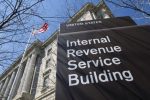New Required Minimum Distribution Guidance (Again)
The IRS has released a new Notice (2023-54) that provides transition relief for Required Minimum Distributions (RMDs) under the SECURE 2.0 Act passed in December, 2022.
Background
The SECURE Act of 2019 (“SECURE 1.0”), limited the duration of most RMDs to beneficiaries to 10 years after death (with the exception of a spouse or a minor child). This limitation applies to defined contribution plans (including 403(b) and 457(b) plans) and IRAs. For most plans, the new limitation on beneficiary distributions applied to deaths after December 31, 2019. For governmental plans and many collectively bargained plans, the new limitation was effective for deaths after December 31, 2021.
In early 2022, the IRS issued proposed regulations addressing the new RMD rules. Under the proposal, the regulations would be effective January 1, 2022, and a reasonable, good faith interpretation of SECURE 1.0 would suffice for 2021. To say the proposed regulations on the application of the 10-year rule were controversial is a gross understatement. For example, most practitioners thought that a non-spousal beneficiary could choose to take no RMDs in the first nine years following the participant’s death, and the entire RMD in the 10th year. The proposed regulations quashed that idea.
As a result of scores of comments on the proposed regs, the IRS backed down slightly by providing transition relief in Notice 2022-53. That Notice said that RMDs under the proposed regulation would not go into effect prior to January 1, 2023.
SECURE 2.0 changed the RMD rules again. One of those changes was a delay in the Required Beginning Date (RBD) when a participant (living) must start taking RMDs. SECURE 2.0 changed the RMD age to 73 (and eventually to age 75 by 2033), resulting in a one-year delay in RMDs for individuals born after 1950.
This was a problem, since many plans had already begun RMDs under the pre-SECURE 2.0 rules. Since RMDs cannot be rolled over to other plans or an IRA, those who were not yet 73 (such as those born in 1951) were getting RMDs that are taxable and couldn’t be rolled over.
IRS Notice 2023-54
The new guidance provides for two areas of relief:
-
- Effective Date Delay. The Notice announces that the RMD regulations, when finalized, will not be effective before January 1, 2024. The delay is understandable given the many changes SECURE 2.0 made to the RMD rules.
- Rollover Relief. For those who already took what they thought was an RMD in 2023 (when they didn’t need to due to their age under the SECURE 2.0 law), the Notice says that those individuals can indeed rollover that distribution to another plan or an IRA by September 30, 2023. Normally, there’s only a 60-day period in which to roll over a non-RMD.
- Effective Date Delay. The Notice announces that the RMD regulations, when finalized, will not be effective before January 1, 2024. The delay is understandable given the many changes SECURE 2.0 made to the RMD rules.
What to Do Now
First, review with your investment platform and Third-Party Administrator (TPA) any RMDs already issued this year to determine if they are now eligible for a rollover to another plan or IRA. Next, stay tuned for additional guidance from the IRS and DOL as we expect substantially more guidance on SECURE 2.0.


